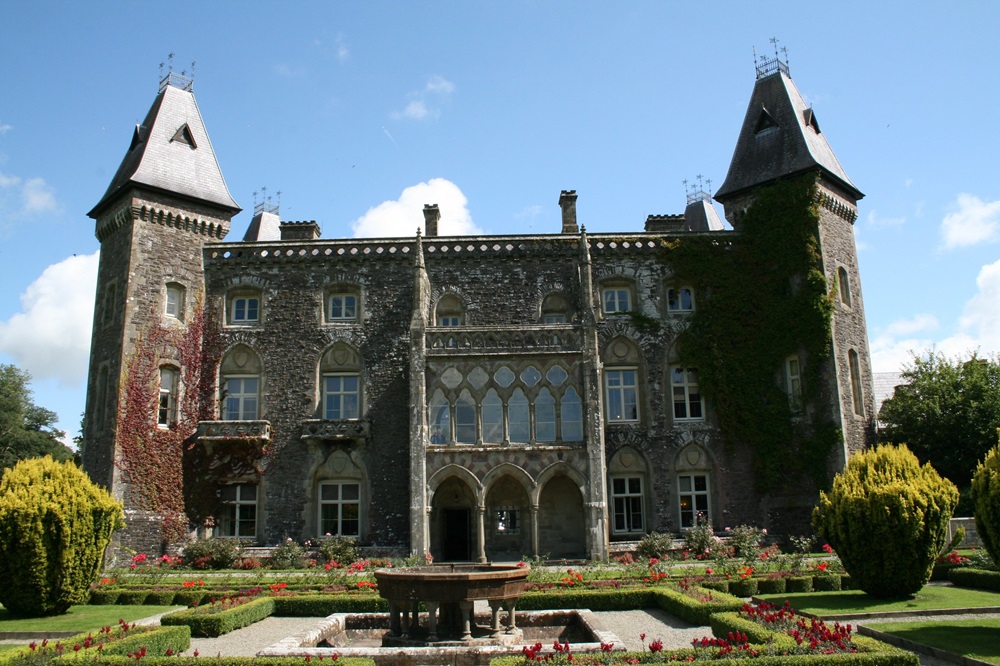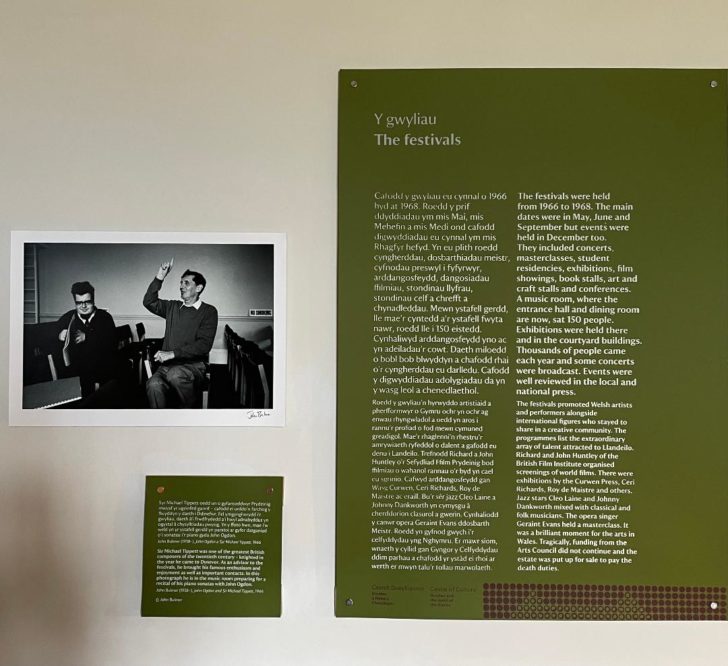Exhibition: A castle of culture

Stefan Rhys-Williams
Newton House, nestled on the outskirts of Llandeilo, has long been a popular destination for tourists and locals alike.
Its rich history and striking architecture make it a beacon of cultural significance in Carmarthenshire. Recently, this historic venue has been further illuminated by a vibrant new exhibition titled Castle of Culture: Dinefwr and the Spirit of the Sixties, which seeks to bring a relatively unknown aspect of its past to a contemporary audience.
The exhibition, which opened in July and will run for two years, serves as a bridge between the past and present, showcasing the house’s pivotal role in promoting Welsh culture during a transformative era.

In the 1960s, for a brief but impactful three years, Newton House – now a National Trust property – was more than just a historical landmark; it was part of an ambitious cultural movement. Richard Rhys, 9th Baron Dynevor and then-owner of the house, founded an arts festival whose aim was to elevate and promote all facets of Welsh culture.
From visual arts to music, theatre, and film, the festival was a celebration of the dynamism and diversity of Welsh artistry. The current exhibition, curated by Peter Wakelin, meticulously documents the spirit of the festival, offering visitors a chance to delve into its rich cultural history.
Video footage
Inside the imposing seventeenth-century walls of Newton House, visitors can explore a variety of historical artefacts. The exhibition features video footage chronicling the festival’s history, architectural drawings of the house and several paintings which were on display during the original festival, as well as letters and press cuttings from the period.
Each piece in the retrospective highlights the enduring allure and significance of Welsh art and culture.
The Dynevor family has a long and storied cultural lineage stretching back centuries. Rhys ap Gruffydd, an ancestor of Richard Rhys, hosted the first Eisteddfod at Cardigan Castle in the 12th century and The Dynevor Arts Festival of the 1960s, and now this exhibition, can be seen as a modern continuation of that tradition.

The festival itself, which ran from 1966 to 1968, was conceived as a means to establish a permanent arts centre in Wales and to secure the future of Newton House during a challenging period.
The sudden deaths of Richard’s father and grandfather had left him with a substantial inheritance tax burden and the festival was both a financial and cultural lifeline.
While the festival was deeply rooted in a celebration of Welsh art and culture, it was far from insular. Richard Rhys was determined to infuse it with an internationalist sensibility, spotlighting work from places as diverse as India, Spain and Eastern Europe.
This global outlook was a testament to his vision of Welsh culture as both unique and outward-looking.
Richard Rhys was a passionate advocate for Welsh culture, particularly theatre. Before inheriting the Dynevor estate, he had already made a significant contribution to the arts, working as a producer at The Gate Theatre in Dublin and founding The Merlin Theatre Group in Swansea.
His wife, Lucy Rothenstein, was also instrumental in the festival’s success, particularly in organising the visual arts programming. The works of artists like Ceri Richards, Ernest Zobole and Roy de Maistre were prominently featured, each receiving their own dedicated exhibitions.
Together, they created a cultural legacy that continues to resonate today, and the Castle of Culture exhibition ensures that this remarkable chapter in Welsh history is remembered and celebrated.
The exhibition’s curator, Peter Wakelin, will be giving a talk on the Dynevor Arts Festival on the 21st of September at 2pm. Click here for more information.
Support our Nation today
For the price of a cup of coffee a month you can help us create an independent, not-for-profit, national news service for the people of Wales, by the people of Wales.





I remember attending that festival on my Dad’s shoulders. It was all very exciting and the then Lord was obviously a cultural pioneer before his time and reverted the family name to Rhys from Rice.